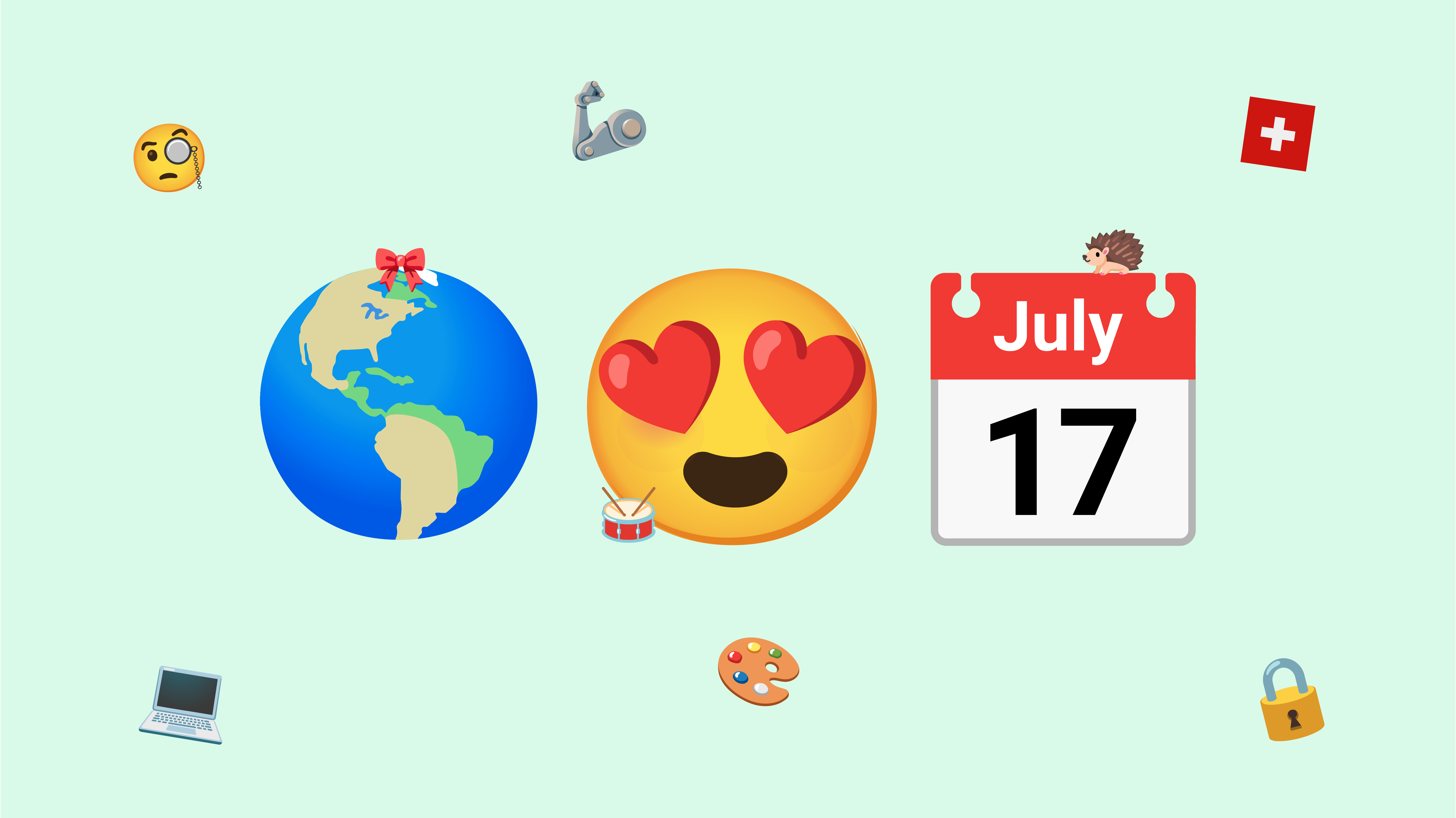Fun Facts to Celebrate World Emoji Day

Every year on July 17, World Emoji Day is celebrated. Because emojis have become indispensable for chat communication – whether as a reaction to a message or directly in the text – we have put together a few fun facts about the little pictograms.
Why July 17?
World Emoji Day was set on July 17 because that’s the date the calendar emoji shows.
Originally, only Apple’s calendar emoji displayed July 17, which can be traced back to the day in 2002 when Apple introduced its desktop calendar app iCal.
A few years later, on July 17, 2014, the founder of Emojipedia, an online resource for emojis, launched World Emoji Day because of the Apple emoji. In 2016, Google also changed the date of its calendar emoji to July 17.
Emoji Stats
According to Emojipedia and the website of the World Emoji Day,
there are 3,790 different emojis.
the face laughing with tears of joy is the most frequently used emoji on X.
New Year is the time when emojis are used the most.
There Is a World Emoji Award
As part of World Emoji Day, the most popular new emoji, the most anticipated new emoji, the most popular emoji of the past year, and the most popular emoji of all time are chosen.
The most popular new emoji of 2024 was the horizontally shaking head 🙂↔, which stands for disagreement or rejection.
The most anticipated emoji️ was a face with bags under the eyes.
The most popular emoji of 2024 was chosen on X, where users could vote for their favorite emoji from a range of nominees. The following emojis were available to choose from: 🫨😭💀🫡🙂↔️🫠🩷⛓️💥🥹✨🐦🔥🙂↕️🫶🤡🕊️🤖. In the end, the melting face was chosen as the most popular emoji of 2024: 🫠.
In 2024, the most popular emoji of all time, whether old or new, was the sparkle emoji ✨, which is often associated with positive sentiments and cleanliness.
When There Were No Emojis Yet
A brief excursion into the history of emojis: Emojis were developed in Japan as early as 1999, but it was not until 2007 that Apple introduced emojis on iPhones, which led to their spread outside Japan. Emojis were then incorporated into the Unicode standard in 2010 so that they could be displayed uniformly worldwide.
Before that, so-called emoticons, i.e., sequences of punctuation marks, letters, and words, were often used to communicate feelings in text messages. One emoticon that everyone still knows today is the colon followed by a hyphen and a closing bracket. :-)
A list of emoticons can be found on Wikipedia.
Couples Who Use Emojis Have a Closer Relationship
This is the conclusion of a new US study that investigated how the use of emojis in text messages influences the perception of responsiveness and, as a result, likability, closeness, and relationship satisfaction.
The study found that messages containing emojis are perceived as more responsive than text-only messages. Perceived responsiveness, in turn, predicted significantly higher ratings of closeness and relationship satisfaction.
The Meaning of Emojis Is Changing
If you don’t know what a particular emoji stands for, you can find the corresponding explanation on Emojipedia. However, this meaning can change over time, and once popular emojis can be perceived as uncool by younger generations. According to a non-representative study, the red heart, for example, has become fairly normal; the one with glitter (💖), for example, is more expressive. Similarly, the crying face (😭) is no longer used by younger generations as an expression of sadness, but (often in combination with the skull 😭💀) in situations when something is so funny that you start to cry.

